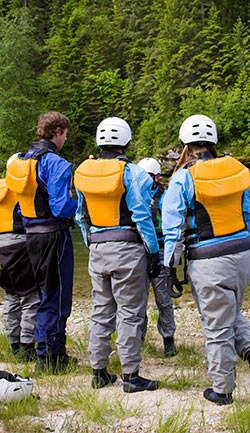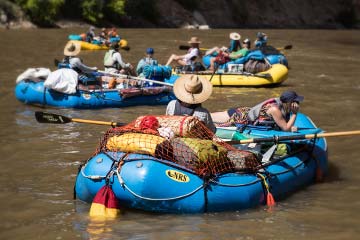How to Extend Your Boating Season
 Most of us start boating in the warmer months, and some keep boating activities to those summery times. However, lots of us get addicted to on-the-water fun and want to keep going out when it gets chilly. For you to do that, things have to change. No longer can board shorts, sandals, a t-shirt and life jacket suffice as boating attire.
Most of us start boating in the warmer months, and some keep boating activities to those summery times. However, lots of us get addicted to on-the-water fun and want to keep going out when it gets chilly. For you to do that, things have to change. No longer can board shorts, sandals, a t-shirt and life jacket suffice as boating attire.
The First Thing You Need
Is a change in mindset. To stay safe, as well as comfortable, when you’re on the water, you’ve got to get used to the fact that water conducts heat away from your body some 25 times more efficiently than air. The new mantra you need to adopt is “I dress for a swim.” No, you don’t plan to swim, but if you do, you need to be prepared and protected.
How to Protect Yourself
- Always wear your life jacket. Wearing it any time of the year is the smart thing to do, but it’s doubly important for survival when the water’s cold. The video in the article, Let’s Stop the Senseless Loss of Life, vividly demonstrates what happens when you get dumped in cold water without one.
- Today’s boaters are fortunate there are so many excellent products for protecting the body from heat loss. Synthetic fibers like nylon and polyester don’t absorb water and make excellent base layers. Wool, especially merino wool, is also a popular material. Avoid cotton; it absorbs water, dries slowly and loses its insulating value when wet.
- An old boater standby is neoprene. Developed in the 1930s, its closed-cell foam provides excellent insulation, plus cushioning from impacts and extra buoyancy to float you higher. We carry garments with neoprene thicknesses from 0.5 to 4 mm.
- Waterproof-breathable apparel features high-tech membranes and coatings that block liquid water, while allowing perspiration moisture to pass through. Splash wear protects base layers from spray and rain, while dry tops, dry pants and drysuits totally lock out water, even in immersion.
- With any of these choices, think in terms of layering. This gives you the maximum flexibility of adjusting your insulation to the conditions. Check out Cold-Water Layering for a more complete guide to the various types of protective boating apparel.
Other Considerations
- Your choice of apparel pieces really depends on the type of boating you’re doing and the conditions you’re boating in. There’s a real difference between, say, paddling along shore in a quiet lake, as opposed to tackling swift whitewater or venturing offshore in open ocean waters.
- Also, be aware that you don’t have to be immersed in water to suffer severe heat loss. Splash, spray and rain can soak inadequately protected insulating layers. And rapid cooling takes place when wind evaporates moisture that soaks those outer layers.
- Seek advice from your local paddlesports dealer. Joining a paddling club will not only put you in touch with local experts, but can bring you paddling partners. Boating forums like Paddling.net and BoaterTalk.com connect you to larger boater communities. You can also get advice from our knowledgeable staff by calling 877.677.4327 or emailing service@nrs.com.
- Don your protective apparel, then go out and test its effectiveness. Get in shallow water, similar in the temperature in which you’ll be boating, preferably with someone there for backup. Spend some time getting used to what it will feel like when you go for that unplanned swim. If you don’t think you’ll be warm enough to self rescue and get to safety, revisit your choices and add to your protective layers.
- Start slow. Don’t jump right into a big expedition or long trip. Spend some time getting used to boating in cold water.
- Boating with others is always a wise choice. In cold weather, it’s especially smart. If you get into trouble, having others that can help rescue, get you to shore and warmed up can be a life saver.
The Bottom Line
Year-round boating is possible and can be safe and fun. Do your homework, purchase the proper protective apparel, and spend some time acquiring the skills you need. There’s lots more information on safe boating practices in our Learn pages.
Boat Often and Boat Safe!
 NRS Gift Card: Always Fits, Always Wanted
NRS Gift Card: Always Fits, Always Wanted




